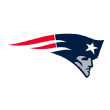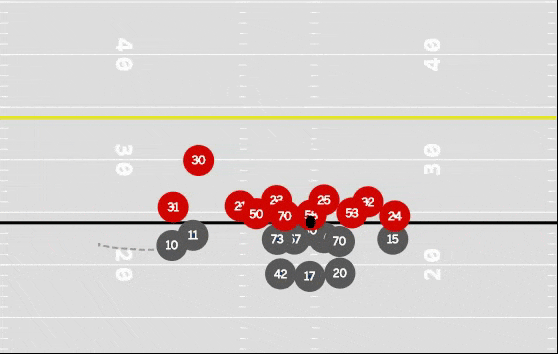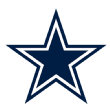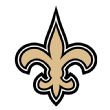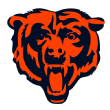Barnwell: How Week 4 showed fatal flaws for the NFL's best teams

It's almost impossible to be good at everything in the modern NFL. We're not that far removed from an era in which the league's best teams were dominant on both sides of the ball. From 1991 to '99, at least one team in each season posted a top-five finish in both offensive and defensive DVOA. Fast-forward 20 years and from 2011 to '19, only five of those seasons featured a team that was in the top five on both offense and defense.
One of those seasons was the still-nascent 2019 campaign, and the team was the Patriots, who will be dropping from their fourth-placed spot in offensive DVOA after the Bills held them to nine points on offense Sunday.
All across the league in Week 4, we saw teams that might be able to stake their claim as the best in football struggle to live up to expectations. Several of those squads pulled out narrow victories, but the tape isn't going anywhere. This could be another year without a single team blowing away the competition on both offense and defense.
Let's run through those teams and get a sense of what might be holding them back or loom as a serious flaw. With apologies to the Packers (who didn't play on Sunday) and the Seahawks (who have now played all four of their games against teams that were missing their best player for part or all of the contest), I'll start with the Patriots, who faced their toughest test of the season so far by a considerable margin:
Jump to a team:
BUF | CHI | DAL
KC | LAR | NE | NO
New England Patriots
The problem: Lack of infrastructure around Tom Brady
Rarely do you see Brady as flummoxed by a defense as he was against the Bills on Sunday. The 42-year-old finished the 16-10 win just 18-of-39 passing for 150 yards and an interception, with New England's nine offensive points coming on short fields after interceptions. (More on those in a minute.) Against a Sean McDermott defense that specializes in taking away big plays, Brady's average completion traveled just 2.9 yards in the air, the shortest mark for any quarterback in Week 4.
This was one of the least productive games of Brady's career. That's not hyperbole. Using adjusted yards per attempt, which is a better-weighted version of passer rating, Brady's 2.7 AY/A was the eighth-worst start of the future Hall of Famer's career in games with 20 pass attempts or more. Maybe we shouldn't have been surprised. The six worst contests were all starts from before the Brady Awakening in 2007. The seventh-worst start was Brady's game against the Bills in Week 16 last season, when he averaged just 2.3 AY/A in a 24-12 victory.
Of course, Brady and the Patriots went on to win the Super Bowl last season, so there's not much to be worried about, right? Yes and no. It's fair to note that they won't have to play the Bills every week, and Buffalo might very well have the best defense in football. Brady has looked great this season and played fine on Sunday beyond an awful interception in the end zone on a pass he never should have thrown.
Last season, though, the Patriots had ways to help out Brady. Their running game took over during the AFC portion of the playoffs, with Sony Michel running behind an offensive line that coalesced as the season went along. In their postseason wins over the Chargers and Chiefs, the Pats ran the ball 82 times for 331 yards, 25 first downs and eight touchdowns. More than 46% of their runs qualified as successful by ESPN's expected points added model (EPA).
Anyone who owns Michel in fantasy football is well aware that the former first-round pick has struggled mightily this season. He began the game with a 15-yard carry and finished with 17 carries for 63 yards, but neither he nor the rest of the Pats' backs have been up to the task. New England is 24th in the league in yards per carry (3.2), and just over 40% of its runs have qualified as successful by EPA. That figure falls to 36.7% if you exclude the game against the Dolphins, who don't appear to be playing the same sport as the Bills.
I wouldn't pin all of the blame on Michel and the backs. An offensive line that was dominant during the postseason is just trying to get by right now. Left tackle Isaiah Wynn, who went down during the Week 2 win over the Dolphins, is on injured reserve with turf toe. His replacement is journeyman Marshall Newhouse, who played Sunday after missing practice with an illness. The Pats were already down center David Andrews, who is done for the year with blood clots, and made a rare pro scouting misstep when they traded a sixth-round pick for Bills center Russell Bodine, only to cut him after a week. Fullback James Develin, a key blocker in the running game, is also on injured reserve.
When the Pats struggled to run the ball or do much of anything on offense during the Super Bowl, they had a second advantage to fall back on: Gronk. They pieced together their game-winning drive against the Rams by running the same play three times in a row for 49 yards, setting up a Michel plunge. Rob Gronkowski and Develin made that concept work as bigger players who were both excellent blockers and viable (or in Gronk's case, much more than viable) receivers. The Patriots could start with heavy personnel, force the opposing defense to match with their base defense, and then use their weapons to create mismatches in the passing game.
Gronkowski is gone, and the Patriots don't have the healthy pieces to create those mismatches. Remember two weeks ago, when I wrote about how the Patriots could go 16-0 and gushed about the upside of their receiving corps around Brady? A lot has changed in two weeks. Antonio Brown is no longer on the roster. Josh Gordon and Julian Edelman are both less than 100 percent as they play through injuries, and they've each dropped two passes over the past two weeks. Gordon is a mismatch when healthy, and Edelman was whipping the Steelers as recently as Week 1, but the Pats' best receivers right now are Phillip Dorsett and James White.
As a result, Brady spent most of Sunday throwing to White and Dorsett, who combined for 19 of his 34 catchable targets. (Five of his passes were marked as thrown away.) He was stuck attempting to repeatedly thread the needle downfield, and while he managed to create one big play on a wheel route to White and a second by attacking a gimpy Tre'Davious White for a pass-interference call after James White went out with an injury, many of those passes into tight windows fell incomplete.
This should get better as the season goes along. The Patriots get Washington and the two New York teams over the next three weeks, which should help make them look a lot better than they did against the Bills. Offensive line coach Dante Scarnecchia has a long history of improving his linemen as the season goes along, and the Pats should get better once Wynn returns from his toe injury in November. They might also get back first-round wideoutN'Keal Harry as their other player from injured reserve at midseason, which would give Brady a physical mismatch in single coverage. Gordon and Edelman should also get healthier. Of the various concerns I'm laying out here, the Pats' problems are more fixable than most.
Buffalo Bills
The problem: Josh Allenis hopeless against smart defenses
Sunday's Bills-Patriots game was reminiscent of last December's game between those two teams on both sides of the ball. The Bills forced Brady into one of this worst games as a pro. On the other side, the Patriots took away what Allen does best and forced him into beating them from the pocket. Allen couldn't do it last December, and the second-year quarterback was even worse Sunday.
The worst quarterback performance of the day by Total QBR belonged to Allen, who went 13-of-28 for 153 yards with three interceptions, four sacks and a fumble before being knocked out of the game by a hit to the head from Jonathan Jones. Before the injury, Allen simply had no answer for how the Patriots defended him. Bill Belichick's defense is having a wildly impressive start to the season.
If you've watched Allen play more than a handful of snaps, you know how he threatens teams. He has improved his accuracy and thrown fewer deep passes in 2019, but the possibility of the deep throw and the threat Allen provides with his legs is where he can really hurt opposing defenses. Much of that comes from outside the pocket. Since the start of 2018, he has thrown about 20% of his passes from outside the pocket and leads the league in scramble yards.
Last season, the Patriots stayed disciplined in their rush lanes, trapped Allen in the pocket and trusted their defensive backs to hold up in coverage against a middling Bills receiving corps. They forced Allen to throw 41 times, and he completed just 20 of those passes for 217 yards, adding two picks. Outside of the pocket, Allen was just 1-of-3 for 5 yards. He scrambled only twice for a total of 11 yards. Belichick took away Allen's ability to place defenders in conflict with his legs and subsequently rendered Allen wholly ineffective.
Guess what happened Sunday? The Patriots forced Allen to live inside the pocket; he again was just 1-of-3 outside the pocket, and while his one completion went for 16 yards, one of the incompletions was a brutal interception. Allen scrambled just three times for 20 yards, fumbling on one of those runs.
With more confidence in his secondary, Belichick heaped added pressure on Allen by sending big blitzes -- or what appeared to be big blitzes -- on many third downs. While he wasn't sacked once in last season's matchup, the Patriots sacked him four times Sunday, with a fifth wiped away by a Stephon Gilmore holding penalty. One of those sacks came just before halftime and pushed Buffalo backward for what became a 49-yard field goal, which Stephen Hauschka then pushed wide. The sack that was wiped off by Gilmore's holding call was the most interesting of the bunch, as a Cover Zero rush where Allen simply had no idea where to go with the football (animation courtesy of NFL Next Gen Stats):
It will infuriate Bills fans who insist otherwise, but Buffalo likely would have won this game with former quarterback Tyrod Taylor, if only because the biggest strength of the now-Chargers backup is his ability to avoid turnovers. The team would have had a viable shot of winning if Allen had just kneeled three times and run off to the sideline for a punt. The Bills were able to get Frank Gore and the running game going, with the ageless wonder running 17 times for 109 yards and setting up a Drew Brees-esque glance over the pile from Allen for a touchdown, but they had the fifth-worst passing game of the season by win probability added.
It's too early to give up on Allen improving, of course. He's going to look better against less-disciplined defenses, as he did against the Giants in Week 2. His next six weeks include a game against Washington and a pair of games against the Dolphins, and it wouldn't shock me if he looks like he's improving against dismal competition. On Sunday, though, he was quite obviously holding back the rest of his team.
Kansas City Chiefs
The problem: The front seven
Last week, I wrote about how the Chiefs still can't stop the run. When you're the Chiefs and your quarterback is Patrick Mahomes, though, you can generally afford to be bad against the run. Andy Reid's offense has scored on a staggering 63.7% of its first-half possessions since the start of 2018, which is comfortably the best mark in football. No other team tops 50% over that same time frame. The Chiefs get out to plenty of early leads, which force the opposing offense to abandon its running game and throw the ball to try to catch (or keep) up. The Chiefs are a NASCAR car with a perennially malfunctioning windshield wiper. Most of the time, their biggest weakness isn't going to really matter.
What's more concerning about the Chiefs, though, is that the offseason changes they made to try to improve their pass defense haven't really taken. After hiring Steve Spagnuolo to replace Bob Sutton, the Chiefs overhauled their secondary, adding three new starters in cornerbackBashaud Breeland, safetyTyrann Mathieu and rookie safety Juan Thornhill. The biggest shift, though, was up front, where they acquired Frank Clark and Alex Okafor to replace Dee Ford and Justin Houston on the edge. Both Clark and Okafor are solid against the run, but the Chiefs made those moves to try to improve their pass rush.
So far, the pass rush is much worse. Kansas City pressured opposing quarterbacks on 31.1% of dropbacks last season, the seventh-highest rate in football. This season, that same pressure rate has fallen all the way to 23.8%, which is just ahead of the Falcons at 25th in the NFL. Kansas City's sack rate hasn't fallen quite as precipitously, but quarterbacks have had an easier time against the Chiefs than they did a year ago.
On Sunday, we saw the Lions take advantage of both concerns and outplay the Chiefs, only to be denied victory by their own mistakes. Detroit controlled the clock, held the ball for nearly 34 minutes, and ran the ball 35 times for 186 yards. Matthew Stafford came into the game with a hip injury but didn't show many effects; the Chiefs pressured him only 22.5% of the time, and he went 21-of-34 for 291 yards and three touchdowns.
The Lions had 11 meaningful possessions, leaving out the two that came at the end of each half. Six of those 11 possessions made it inside the Chiefs' 10-yard line. Three of them ended in touchdowns. One resulted in a field goal. The other two produced fumbles. One was Stafford's worst play of the game and came after a Kenny Golladay touchdown catch was narrowly overturned; the former first overall pick scrambled out of a collapsing pocket, only to lose the ball on his way out, costing the Lions three points.
The other fumble cost them as many as 14 points, when Kerryon Johnson fumbled inside the 2-yard line and Breeland scooped up the ball and returned it for a 100-yard touchdown amid relative indifference from the Lions, who thought Johnson was down. The fumble was confirmed on replay and appeared to be the correct decision, but it reinforced just how the NFL has pushed officials into a corner.
I'm still concerned about the Kansas City defense holding up week after week throughout a postseason run. While Chiefs fans were basically excited to have anybody besides Sutton as defensive coordinator, Spagnuolo's defenses ranked 26th or worse in points allowed in four of his previous five seasons as head coach or defensive coordinator before joining the Chiefs. Chris Jones, who had a career season with 14.5 sacks and 29 knockdowns last year, has two sacks and five knockdowns through four games. Clark has one sack and one knockdown.
There's plenty of time to get going, and the secondary has shown more promise than it did a year ago, but the early returns on Kansas City's big offseason decisions aren't great.
Dallas Cowboys
The problem: Pass pressure
The Cowboys, likewise, haven't been great getting after quarterbacks this season. While they have yet to play a quarterback who wasn't either benched or a backup to start the season, they're pressuring opposing passers on just 19.7% of dropbacks after one month of football. That's the third-worst rate in football, ahead of only the Raiders and Dolphins.
The likes of Eli Manning and Josh Rosen weren't able to make the Cowboys pay frequently, but there's already a noticeable drop-off when the Cowboys don't get home. When Dallas does get pressure on the opposing passer, it allows a passer rating of 27.8, which is fifth best in football. Its Total QBR in those situations is a mere 1.2, the third-best mark in the NFL. Without pressure, the Cowboys fall to a 96.2 passer rating and 58.4 Total QBR, which is 12th and 10th in the league, respectively. I suspect that gap will rise as the Cowboys face a tougher slate of passers from here on out, including Aaron Rodgers and the Packers next Sunday.
Unlike many of these other teams, though, Sunday was Dallas' best game of the season rushing the quarterback. It pressured Teddy Bridgewater on 24.3% of his dropbacks and sacked him five times on 35 dropbacks, doubling its sack total from the first three weeks of the season. Robert Quinn, who was suspended for the first two games of the season, led the way with two sacks and three knockdowns.
In re-watching those five sacks, though, the numbers sound more impressive than the actual performance. Two of those sacks were legitimately created by the pass rush, including the 16-yard megasack by Jaylon Smithon the final Saints drive that knocked New Orleans out of field goal range. The other three had little to do with the pass rush. One was a Quinn sack in which Saints center Erik McCoy snapped the ball prematurely and Terron Armstead didn't come out of his stance. The other two were coverage sacks in which Bridgewater held the ball and scrambled while waiting for someone to get open, including the Kyle Shanahan "leak" concept where Josh Hill came across the formation and eventually got open, but by the time that happened, Bridgewater was trying to scramble past the line of scrimmage and took a short sack.
Quinn comfortably led the league in ESPN's pass rush win rate last season -- he was at 33% and no other regular defender topped 28.7% -- but the NFL didn't value him as a great pass-rusher, with the Cowboys eventually sending the Dolphins a sixth-round pick to acquire the former Rams standout. If Quinn continues to produce at that rate, the Cowboys could build a scary pass rush around him and DeMarcus Lawrence. If it's mostly Lawrence-or-bust, though, the Cowboys will likely finish somewhere around 2018's pressure rate of 28%, which ranked 24th in the league.
New Orleans Saints
The problem: Quarterback
I'm officially concerned. When I wrote about Drew Brees' injury two weeks ago, I noted that I would be rooting for Teddy Bridgewater. I also pointed out that he hadn't been an effective quarterback since coming back from his knee injury, though that sample contained only 55 regular-season passes thrown over three seasons, during which he had been a part of three organizations.
The Saints have won both of their starts with Bridgewater under center, which is great news for their chances of competing for a Super Bowl. Bridgewater, though, has been a passenger in those victories. The former Louisville star is completing 73.7% of his passes as a starter, but he's averaging only 6.5 yards per pass, which ranks 27th in the league. His Total QBR is just 24.2, which is 29th out of 33 quarterbacks. Only Kirk Cousins, Luke Falk, Mason Rudolphand Andy Dalton are below the former Vikings first-rounder.
Since entering the lineup, the Saints have adapted their offense to fit Bridgewater by throwing virtually everything within 10 yards of the line of scrimmage. Just 19.5% of Bridgewater's passes have traveled 10 or more yards in the air, which is remarkable (and last) in a league in which the average quarterback throws more than 33% of his passes further. Bridgewater's average pass has traveled just 5.3 yards in the air, which is the shortest average pass in the NFL by nearly seven-tenths of a yard. Every other quarterback in the NFL with significant playing time has topped 6 yards per throw.
Throwing short passes is fine if you're moving the chains, but his passes haven't been difference-makers. Only 27.6% of his passes have resulted in first downs, which ranks 30th in the NFL. To contrast, while Brees ranked 29th in average air yards per pass last season, he still averaged 7.1 air yards per throw and converted 40.7% of his passes into first downs, the fifth-best ratio in the league.
When Bridgewater has attempted to stretch his arm downfield, the returns haven't been pretty. The NFL's definition of deep passes includes throws traveling 16 or more yards downfield in the air. On those passes in 2019, Bridgewater is just 1-of-7 for 16 yards with an interception, which came Sunday night. The pick wasn't his fault -- he escaped pressure and made a nice throw before it was jarred out of Ted Ginn's hands for a pick -- but the Saints don't appear very interested in testing teams downfield with their new quarterback.
The Saints are 2-0 with Bridgewater at quarterback, which is all they care about right now, but that has been hugely influenced by their defense and special teams. Those units scored 14 points in the unexpected 33-27 win over the Seahawks in Seattle, and Marshon Lattimore & Co. followed things up on Sunday by forcing a Cowboys team that had converted 58% of its third downs through three games into a 4-of-11 performance on third downs.
Bridgewater has won the two toughest games of what is expected to be a six-game stint replacing the injured Brees. His final four games include home contests against the Bucs and Cardinals and road trips against the Bears and Jaguars. Splitting those four starts would get the Saints to their bye at 5-3 in advance of Brees returning for the second half, which includes five of the Saints' six divisional games in the NFC South. New Orleans is still in great shape to claim the South.
I'm concerned about Bridgewater's chances of holding his own if the Saints do need him down the line in a key game. There are also at least some reasons to worry about Brees, who will be coming back from an injury that could impact his usual pinpoint accuracy. Even if we get the Brees who was closer to good than great during the final few weeks of the 2018 season, though, the Saints are still a Super Bowl contender as constructed. That's going to be a tougher sell if they need to rely on Bridgewater, at least based on his current form.
Chicago Bears
The problem: Quarterback, too
Like the Saints, the Bears' defense is back for another vicious round in 2019. The turnovers have regressed ever so slightly -- they have eight takeaways in four games after racking up 11 over their first four games in 2018 -- but Chuck Pagano's unit held the Vikings to just six points across 10 possessions Sunday. To do that without Akiem Hicks and Roquan Smith is impressive, and as good as Chicago's top-level talent still is, it's heartening to see backups like Roy Robertson-Harris and Nick Williams impressing as their roles expand. This is still a very scary defense.
The problem on the other side of the ball, though, remains that the Bears don't seem to be good enough at quarterback. Mitchell Trubisky came into the season expecting to take another step forward and emerge as an upper-echelon starter. Instead, he was awful during the first two games of the season, and while his numbers were better on Monday Night Football against Washington, even headmitted his performance wasn't a breakthrough. His 116.5 passer rating was betrayed by a 45.1 Total QBR; Trubisky's average throw in the Washington game traveled just 5.4 yards in the air, with his beautiful touchdown pass to Taylor Gabriel on a third-and-17 as an exception.
On Sunday, Trubisky sought to prove his credentials in a tough divisional game against the Vikings, only to be forced from the contest with a serious injury to his non-throwing shoulder after just three pass attempts. Chase Daniel came in and went 22-of-30 for 195 yards and a touchdown pass to Tarik Cohen, though he could lead the Bears to only one drive of more than 10 yards in seven tries during the second half.
After the game, Matt Nagy suggested that Trubisky's injury wasn't season-ending, which leaves a huge swath of possibilities. Quarterbacks in the past have played through separations of their non-throwing shoulders, including Brett Favre and Michael Vick. Blaine Gabbert dislocated his non-throwing shoulder in August and was placed on injured reserve by the Buccaneers, although it's unclear if Trubisky has a similar sort of injury or if the Bears would approach the situation the same way given that Trubisky is their starter.
Nagy also said that the Bears would not need to make any changes to their offense by inserting Daniel, which gets to my bigger concern at the moment with Trubisky. In 2018, the Bears turned to Daniel for two starts against the Lions and Giants while their starter was out with a different shoulder injury. His passing numbers were modestly productive, but the biggest difference between watching the two quarterbacks in the same offense had to do with mobility and scrambling.
Daniel carried the ball eight times for 8 yards during his two weeks as a starter. In 2018, meanwhile, Trubisky generated a huge amount of value with his feet, running 68 times for 421 yards and three touchdowns. By ESPN's expected points model, about 25% of Trubisky's value in 2018 was a product of his work as a runner as opposed to his passing.
Even before going down with his shoulder injury, though, Trubisky had stopped running in 2019. Through a little over three games, the North Carolina product had just five carries for 21 yards. Those numbers put him on pace to finish with just 168 rushing yards. After scrambling 36 times for 320 yards and 16 first downs in 2018, Trubisky had just two scrambles for 10 yards and a lone first down through two weeks. That first down came on Trubisky's first third down of the season.
Is Trubisky deliberately trying to avoid scrambling? It's tough to say through three games. I would argue that it might be the best thing for his long-term development to stay in the pocket on third down and try to get more comfortable going through his progressions without scrambling for first downs, but it's obviously better for his team to take the conversion in the short term.
The Bears have faced longer third downs, which makes scrambling less practical in a situation in which Trubisky loved to get running a year ago. While the average Bears third down required only 5.8 yards to move the chains last season -- the fourth-shortest distance in the league -- Trubisky's average third down through three weeks was at 8.3 yards to go, which was instead the ninth-highest mark in the NFL.
The shoulder injury complicates all of this. If he were healthy, I would have argued for the Bears to try to get him involved as a runner more frequently in the weeks to come. Even if defenses were prepared to stop him, just the threat of him running on third down would help distract defenses and reduce the sorts of coverages Trubisky might see in third-down situations.
We know that shoulder injuries are more likely to recur after the initial injury, with the Anthony Miller injury from 2018 as a recent example Bears fans know well. Trubisky will want to avoid big, unexpected hits to try to keep his shoulder intact, and those are more likely to come as a runner. I'd also be worried about ball security as a runner if Trubisky has to place the ball into his other hand. It seems logical to try to keep Trubisky in the pocket and away from possible aggravations of the shoulder injury as much as possible upon his return, and that means taking his license to run away for the time being.
If Trubisky isn't going to run with the ball, Nagy probably doesn't have to change much of what he does on offense with Daniel taking over. The best version of this Bears offense, though, has Trubisky threatening defenders with his legs and picking up a couple of easy conversions on third downs per game. Take that away and you're asking Trubisky to win as a pocket passer. We haven't seen him do thatconsistently in the NFL.
Los Angeles Rams
The problem: Offensive identity
Let's finish up with the Rams, who lost their first game of the year in an upset to the Buccaneers on Sunday. It was the sort of game the Rams typically don't lose, given that they scored 34 points on offense and added a pick-six for good measure. Since the 1970 merger, teams that have scored 40 points in a game with at least one defensive touchdown were 400-5 before Sunday. They're now 400-6.
You can thank Chris Godwin& Co. for making it to 55 points on the other side of the field, and while that raises questions about the Rams' secondary, it's also fair to ask about what's going on with the Rams' offense. Up against a defense that was gashed by Daniel Jones in his first NFL start last week, Sean McVay's team turned over the ball four times. Jared Goff threw for 517 yards, but it took the former first overall pick 68 pass attempts to get there. He threw three interceptions, got away with at least one other near-pick, and finished with a Total QBR of just 38.8.
Just eight of those 68 attempts came off of play-action, in part because the Rams seemingly had little interest in running the football. Tampa came into the game with the league's second-best rush defense DVOA, and it subsequently held the Rams to 11 carries for just 28 yards. While Todd Gurley scored twice, he carried the ball just five times for 16 yards, instead racking up 11 targets and 54 yards as a receiver.
While I wrote about Goff's slow start to the season last week, it's difficult to extricate his performance from Gurley's. When the Rams were rolling in 2017 and 2018, Gurley was playing every snap and a threat to touch the ball 30 times per game in any single week. The Rams made a killing off play-action and never had to reveal any tendencies by taking Gurley out of the game, which even the Patriots have had to reveal by swapping out Michel and White at halfback.
In 2019, though, the Rams have needed to change their offense. As The Athletic's Ted Nguyen noted, the Rams have swapped out some of their outside zone runs for crack toss to try to beat the six-man fronts they saw at the end of 2018 and the beginning of 2019 and get a ball carrier quickly to the edge. That works, but the Rams can't run the same play-action concepts off a toss play, which eliminates their ability to make everything look the same before a handoff until it's too late.
The Rams haven't been honest about Gurley's health for months. Whether they're trying to fool themselves or the public is unclear. They swore that Gurley's knee was fine during the postseason, only to split his carries with street free agent C.J. Anderson. During the offseason, it became known that Gurley was dealing with an arthritic condition in his knee. This past week, McVay denied that Gurley was on a load management system and suggested that they wanted to get him into a rhythm by using him more in certain weeks.
It's hard to believe the organization here. McVay played Gurley on nearly 81% of the Rams' offensive snaps in 2017 and nearly 84% of the same snaps in 2018 before he started missing time during the Chiefs game. Through the first four weeks of the season, he has played just over 71% of the offensive snaps. The Rams didn't give Gurley what amounted to $40 million guaranteed over three seasons in 2018 to turn him into a back who carries the ball five times per game. After averaging between 22 and 23 touches per game in both 2017 and 2018, he has touched the ball 15 times per game this season.
The other disconcerting thing for the offense, aligned in part to Gurley's absence as a receiver before Sunday's loss to the Bucs, is their disappearing yards after catch. In 2017, the Rams averaged a staggering 6.6 YAC, which would have ranked as the fifth-highest figure over the prior decade. YAC is relatively inconsistent from year to year, but McVay was still able to coax 5.8 yards after catch from Goff's targets in 2018, which was good enough for seventh in the league. In 2019, the Rams rank 20th in average yards after catch, with just 4.9 yards per reception.
The Rams are still realistically at the point of figuring out what their offense is going to look like by the time we get to the postseason. It's a contrast to the 2017 and 2018 seasons, when Goff & Co. were able to hit the ground running. It also can't help that anyone who has ever worn a polo shirt around McVay is now an NFL head coach, forcing the Rams to rebuild their offensive coaching staff. The offense will likely end up looking just fine -- they did score on six of the eight possessions in which they didn't turn over the ball on Sunday -- but it's fair to say that they're in transition.

